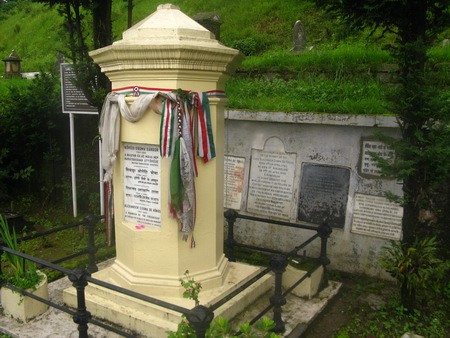Sándor Kőrösi Csoma, born in Transylvania in 1784, studied in Nagyenyed and Göttingen. He had already formulated the idea of visiting the Hungarian homeland back in his university years. In 1819 he cut his way to head east by already speaking 13 languages. He first traveled to Istanbul via Bucharest, from where he had to leave quickly due to the plague epidemic, and he wanted to settle in Egypt to improve his Arabic language knowledge.
However, the plague epidemic in Egypt caught him up, so he had to leave soon. He eventually reached Zangla on an adventurous journey, where he spent nearly a year studying the Tibetan language. He continued his journey, spending three years in Kanam and five years in Calcutta. During this time, he completed the Tibetan-English dictionary, the first in this field. By this time the Orientalist had spoken 20 languages.
On his way to Lhasa in 1842, he became ill with malaria. He died in Darziling, where he was laid to rest in a European cemetery. The tomb of one of the most famous Hungarian travelers is located here, at an altitude of 2100 meters, in northern India. A painting was also made of the tomb, which was placed on the table of István Széchenyi. Széchenyi wrote the following about Kőrösi:
„A POOR ORPHAN HUNGARIAN, WITHOUT MONEY AND CHEERING, LED
BY CONSTANT AND RESPECTFUL RESEARCH HAVE QUESTED AND FOUND THE
ORIGIN OF HUNGARIANS…”


Published by